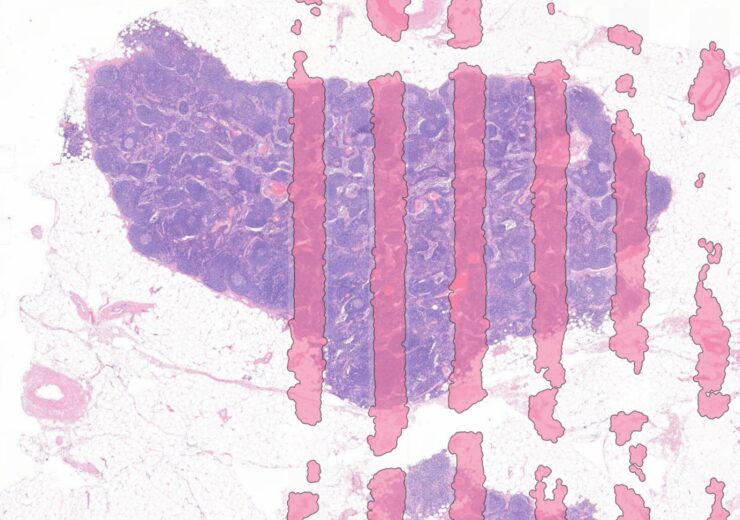The algorithm makes automated scans for the most prevailing artefacts that occur during the heterogeneous pre-analytical process to improve the digital pathology workflow

AiosynQC can identify out-of-focus regions of an H&E stained slide image. (Credit: Business Wire)
Aiosyn has launched an artificial intelligence (AI)-powered algorithm called AiosynQC to support digital pathology labs across research, pharma, and diagnostics to boost their quality control (QC) process.
According to the Dutch medical software company, AiosynQC makes automated scans for the most prevailing artefacts that occur during the heterogeneous pre-analytical process.
Aiosyn, which develops AI-powered pathology software, has trained the algorithm on haematoxylin and eosin (H&E) stained slides.
According to the firm, AiosynQC helps labs in ensuring that only high-quality images are used by pathologists, researchers, and technicians.
The product can detect and flag cases before they are presented to a pathologist, thereby enhancing the workflow efficiency of digital pathology. This is achieved by cutting down on the time required to manually check for artefacts in entire slide images, the medical software company said.
Aiosyn CEO Patrick de Boer said: “AiosynQC will be an important foundational layer and we believe that AI-powered workflow solutions are the entry point for the use and adoption of computational pathology algorithms.”
AiosynQC is claimed as a modular and adaptable software that is offered to customers as a service solution which can be installed on-premises or in the cloud.
Additionally, it can be integrated into existing digital pathology software. The automated QC is the first product in Aiosyn’s workflow solutions suite, the Dutch medical software company added.
It will be part of a portfolio of deep learning algorithms that are presently being developed for various pathologies which require the need to improve diagnostic precision and quality.
The company develops AI-powered pathology solutions for integration into standard pathology workflows.
